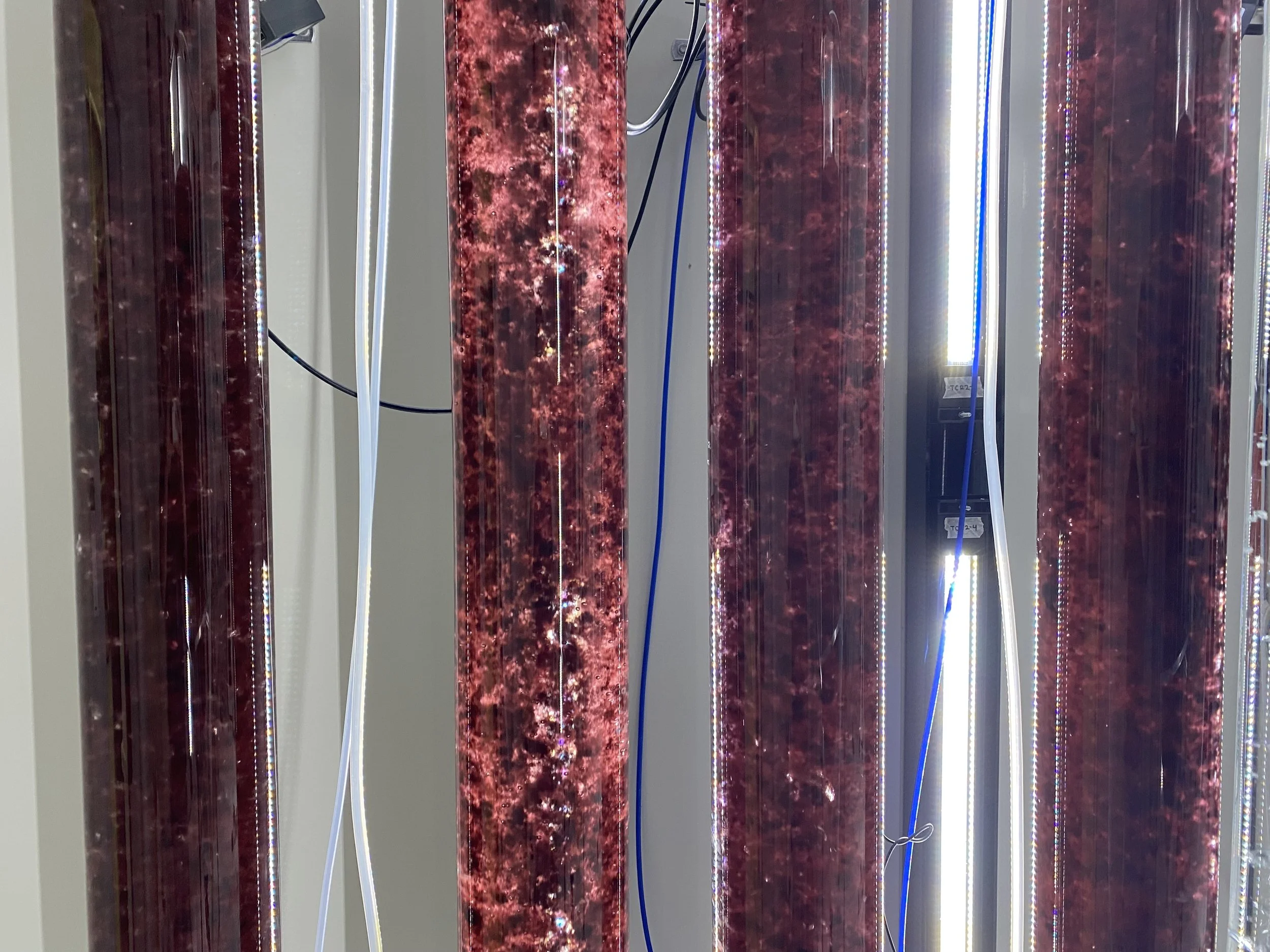
Immersion Group is at the forefront of cultivating Asparagopsis seaweed onshore
So what is Asparagopsis?
Asparagopsis is a red seaweed native to the cool, nutrient-rich waters of southern Australia. Thriving in the powerful swells of the Southern Ocean, this hardy seaweed grows for up to nine months of the year along rocky coastlines and sheltered bays.
For thousands of years, Indigenous Australians have used seaweeds for food, medicine, fishing, shelter, clothing, and ceremonial practices — demonstrating the deep cultural and ecological significance of these marine plants.
European interest in Asparagopsis dates back to 1855, when British botanist William Harvey first documented its abundance in Western Australia. Since then, it has been recorded along Victoria’s coastline, from Portland through to Gabo Island in Gippsland.
Today, two species — Asparagopsis armata and its tropical counterpart Asparagopsis taxiformis — are recognised as game-changing seaweeds for agriculture and climate action. When added in small amounts to cattle and sheep diets, Asparagopsis has been shown to:
Reduce methane emissions by more than 80% in ruminant animals
Improve livestock productivity, with evidence of higher weight gain and milk yields
Deliver significant climate impact, helping agriculture transition to lower-carbon food systems
With its unique ability to cut methane — a greenhouse gas over 80 times more potent than CO₂ — Asparagopsis is emerging as one of the world’s most important natural solutions for sustainable farming.
Asparagopsis: A Farmer's Best Friend
The red seaweed Asparagopsis armata and its tropical relative Asparagopsis taxiformis produce naturally high levels of bromoform — a compound that blocks the enzyme responsible for methane formation in the stomachs of cattle and sheep. By interrupting this process, Asparagopsis can cut livestock methane emissions by more than 80%, according to leading studies in Australia and the United States.
Since livestock are responsible for around 10% of Australia’s total greenhouse gas emissions, this breakthrough offers farmers a practical, natural solution to shrink their carbon footprint while maintaining productivity.
Proven Productivity Gains
Beyond its climate benefits, Asparagopsis is also delivering a production bump for farmers. Canadian farmer Joe Dorgan first noticed cows that grazed seaweed showed improved fertility, higher milk yields, faster weight gain, and fewer health issues such as mastitis.
Backed by science, these early observations have been confirmed in Australian trials. In a controlled CSIRO feedlot study, cattle (steers) fed Asparagopsis achieved an average daily weight gain increase of 22–26% over a 90-day period.
This dual benefit — lower methane emissions and higher productivity — makes Asparagopsis one of the most promising natural feed supplements for the future of sustainable agriculture.
Selling seaweed globally
Immersion Group is one of only five FutureFeed licence holders in Australia and nine globally.
Our licence is an important conduit that allows Immersion Group to sell our products in Australia and Japan. We produce Asparagopsis in both oil emulsion and in freeze-dried format.
ABC News Coverage
Immersion Group was featured on ABC News in February 2022.
Scott and Henry were able to talk about our expansion plans for Victoria and the seaweed industry in Australia.



